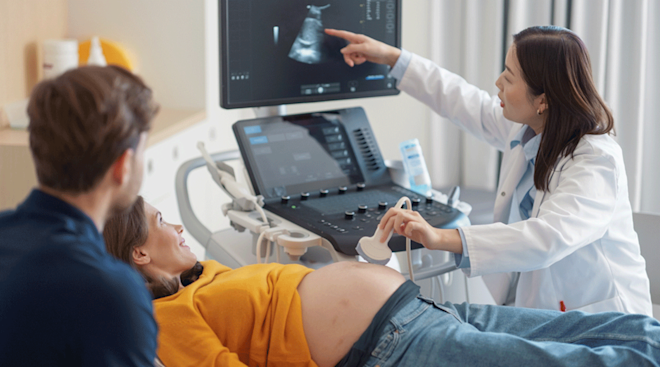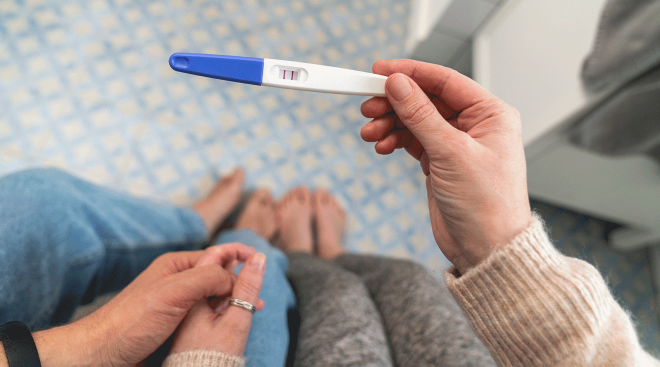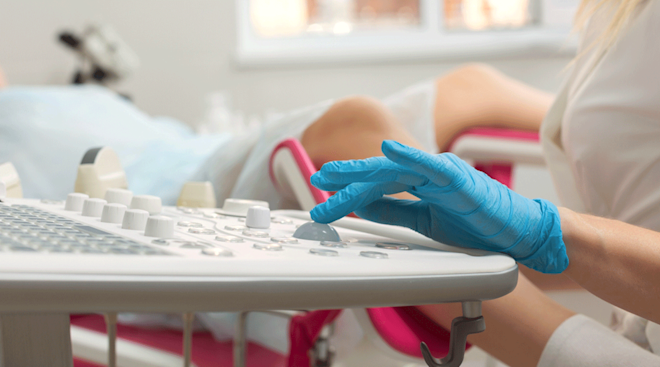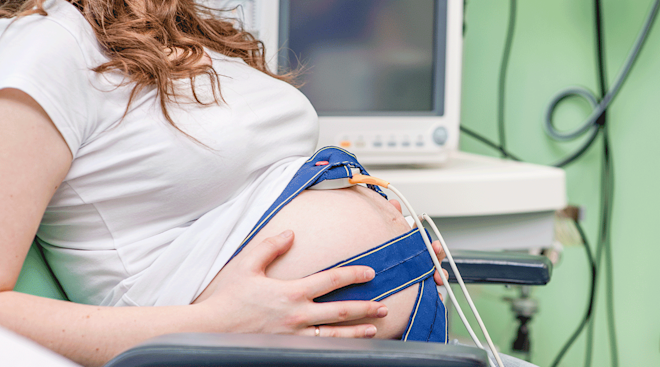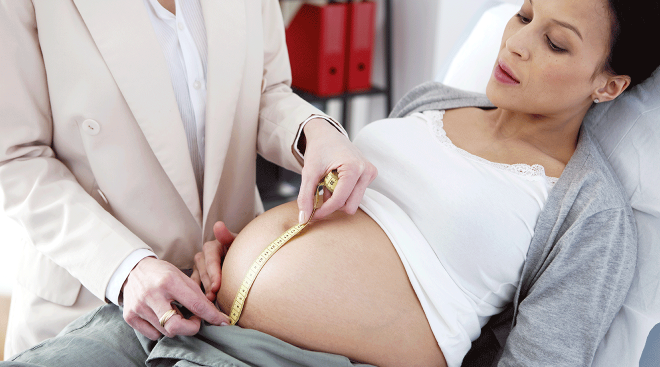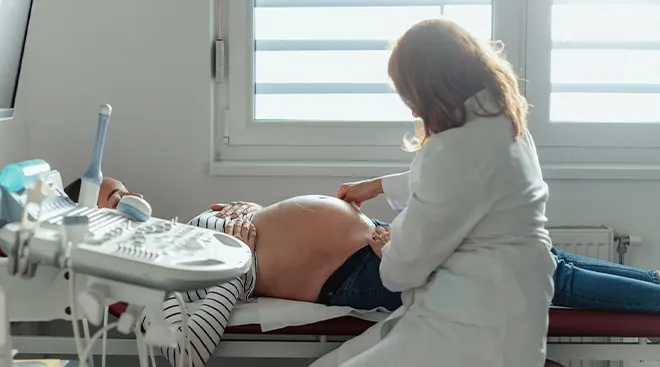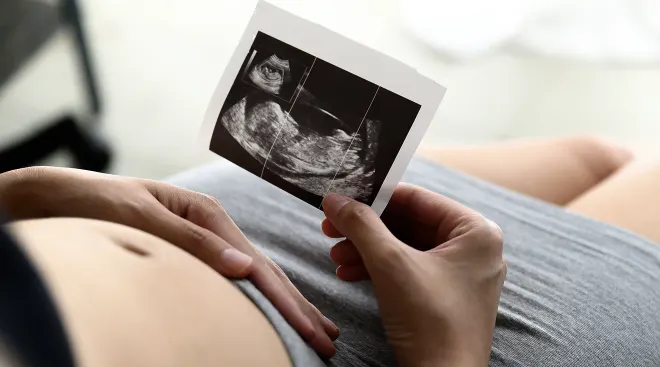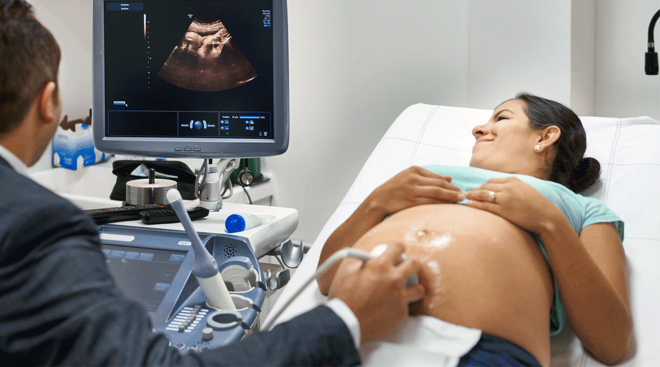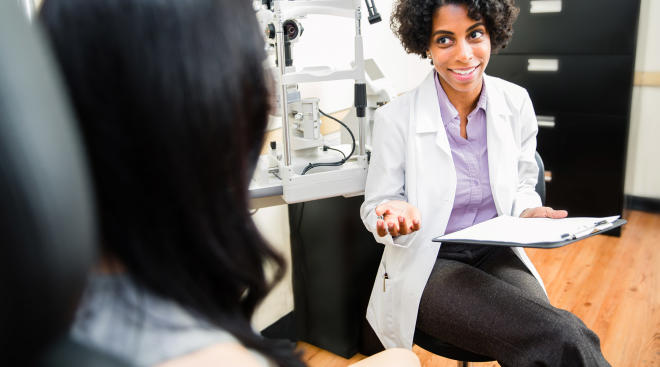FDA Report Warns Against False Positives in Some Prenatal Genetic Tests
A new report from the Food and Drug Administration is warning parents-to-be about the potential risks of false positive results with noninvasive prenatal tests (NIPTs). This type of prenatal genetic testing is a helpful screening tool that’s widely used during pregnancy, but the FDA stresses that it’s not a diagnostic test, and results and next steps should always be discussed with your healthcare provider.
NIPTs are blood tests designed to look for genetic (chromosal) abnormalities and disorders in baby. The tests are used by almost a third of American pregnant women, and while the results aren’t a confirmed diagnosis, they do tend to have a good accuracy rate for certain genetic disorders, like Down Syndrome. A negative result is generally greater than 99.9 percent, according to the FDA, while a positive result for Down syndrome is about 90 percent accurate.
However, the American College of Obstetricians and Gynecologists (ACOG) doesn’t recommend using NIPT to detect microdeletions, which occur when a very small part of a chromosome is missing, and the consequential disorders are often rare. A New York Times investigation published in January 2022 looked into high false positive rates for NIPTs that tested for microdeletions and rare conditions. It found that some of the tests were marketed in a misleading way and reported that some women had terminated their pregnancies as a result.
According to the FDA, how accurately a NIPT test can predict baby’s risk for a genetic abnormality is dependent on how common that abnormality is. Due to this, when testing for microdeletions and rare conditions, the likelihood of false positive results is high—according to the FDA, the positive predictive value can range from 2 to 30 percent, depending on the condition.
While widely used by healthcare providers, NIPTs are not regulated by the FDA. This is because they’re considered lab-developed tests rather than diagnostic tests. As screening tools, these tests can indicate the level of risk for a genetic abnormality, but they can’t definitely confirm or rule out such abnormalities.
In its report, the FDA urges patients and healthcare providers to weigh the risks and benefits of NIPTs. If the patient does opt for them, the agency says the patient, provider and genetic counselors should review NIPT results together and determine next steps. They also advise performing additional diagnostic testing where needed, rather than acting on NIPT results alone, as these tests have limitations. NIPT results can be influenced by technical issues, as well as biological factors. For example, a positive result may be accurately detecting a chromosomal abnormality in the placenta, rather than baby, who might be completely healthy.
The American College of Obstetricians and Gynecologists (ACOG), the Society for Maternal-Fetal Medicine (SMFM) and the American College of Medical Genetics and Genomics (ACMG) all maintain the following recommendations:
ACOG does not recommend using NIPTs to test for microdeletions. The ACMG recommends against testing for missing or extra chromosomes other than those relating to Down syndrome, Edwards syndrome and Patau syndrome. Prenatal genetic screening should be discussed with and offered to all pregnant people regardless of their age or risk for a chromosomal abnormality. Healthcare providers should educate patients on the positive predictive value of NIPT to support an informed decision on whether or not to undergo testing; they should also emphasize that these tests are meant as screening rather than diagnostic tools.
Looking ahead, the agency is working to closely monitor safety issues around the use of NIPTs. Congress is also considering passing the VALID Act, which would allow the FDA to regulate lab-developed tests.
To learn more about the FDA’s report, visit FDA.Gov.
Please note: The Bump and the materials and information it contains are not intended to, and do not constitute, medical or other health advice or diagnosis and should not be used as such. You should always consult with a qualified physician or health professional about your specific circumstances.
Navigate forward to interact with the calendar and select a date. Press the question mark key to get the keyboard shortcuts for changing dates.




































